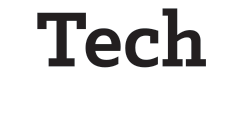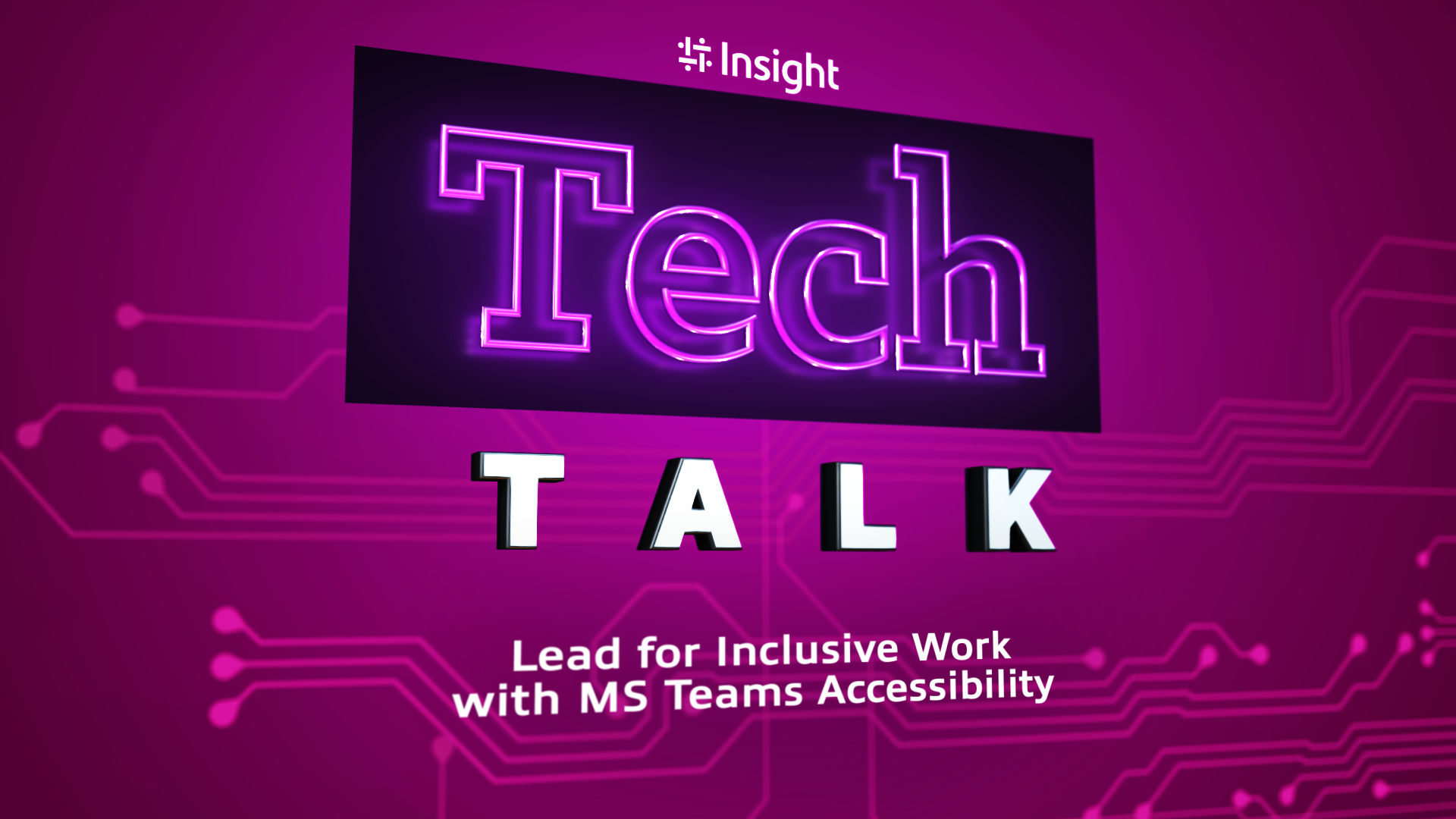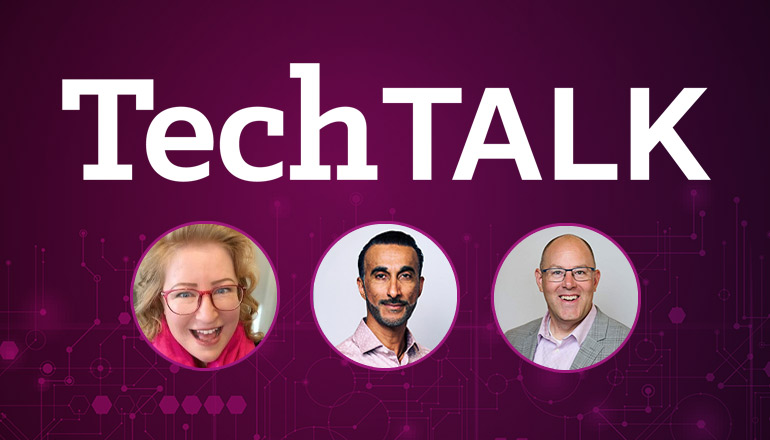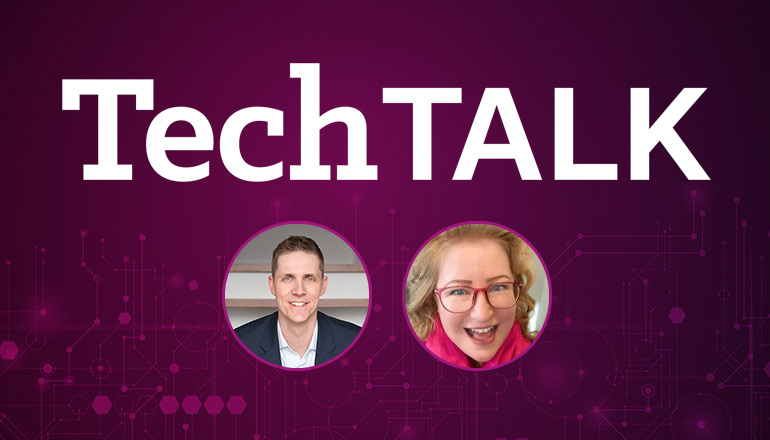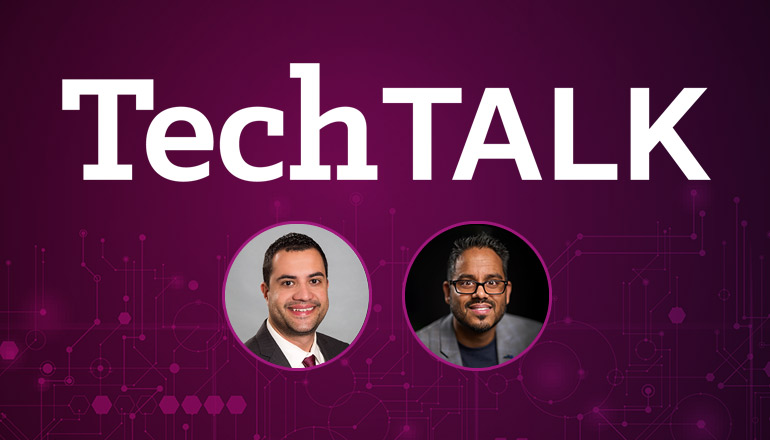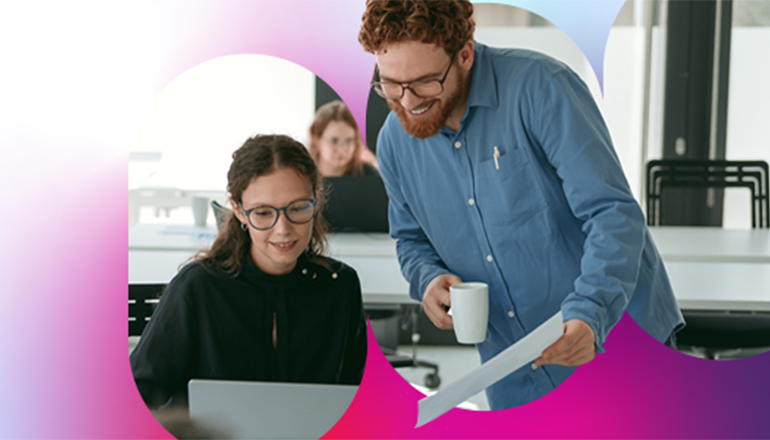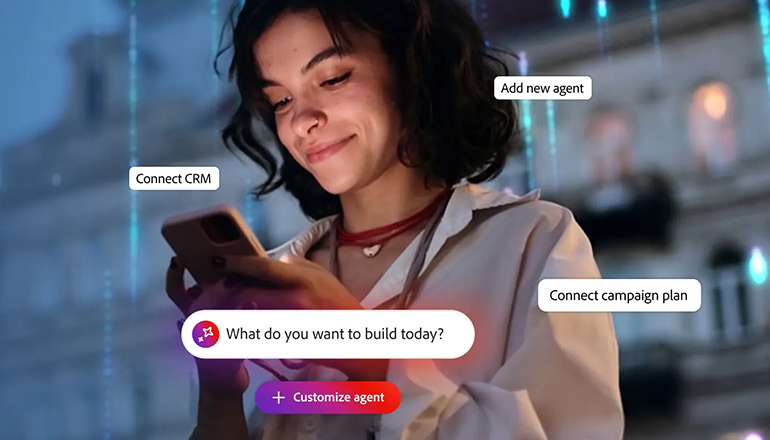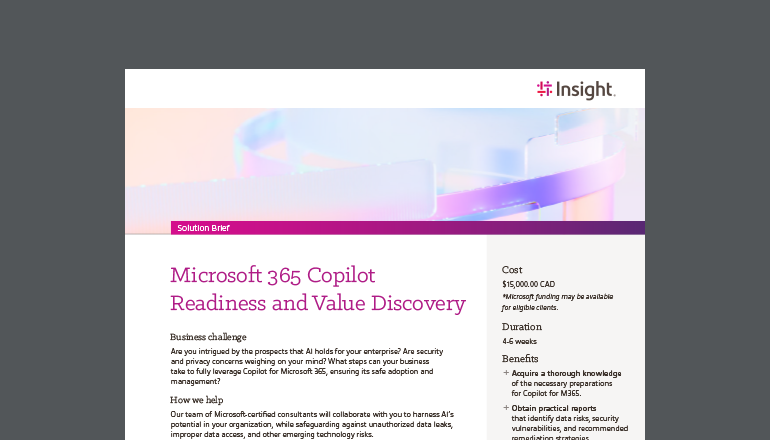Transcription de l’audio:
L’accessibilité de MS Teams au service du travail inclusif
Publié le 22 septembre 2021
JOHN
Hi, and welcome to another edition of Insight's Tech Talk. I'm really excited to do our session today. My special guest is Jason Brommet, who is the head of Modern Work and Security Business at Microsoft Canada. Welcome, Jason.
JASON
Thanks. It's so great to be here.
JOHN
Well, love the sweater, man. You did a good job on that fuchsia.
JASON
I'm trying my very best.
JOHN
Well, today's topic is really about how we're using technology to help with inclusivity. And specifically, what we're thinking about is, how are we using technology for people that have certain kinds of challenges? Whether it's hearing, or whether it's sight, or other things. And I'm really excited 'cause I love when that comes together in how are we helping an individual. Insight, just so you know, is on Forbes List of Best Employers for Diversity and so we're really proud of that. And we look at the partnership with Microsoft as being able to take it even one step further. So, why don't I just start at the very high level within Microsoft, how important is this to Microsoft and why?
JASON
Yeah, it's such a great question, John. And I would start here, which is, if you look simply at our mission statement of empowering every person on the planet to achieve more, in addition to every organization, that in and of itself frames it perfectly, in many ways, which is our ability to ever aspire to deliver on that mission, requires us to think about every single person and every person that uses our technology, whether that be as a consumer, whether that be as an employee of an organization, self-employed, doesn't really matter. And, for us, that becomes really the foundation, which is this idea that says, accessibility needs to be built-in versus bolted on. It's been a multi-year journey for us as a company and we are by no means done. And we really don't see it as a destination because of what we do know is, one, technology continues to evolve at a pretty rapid pace.
JOHN
Yep.
JASON
As do the different categories of disabilities. And so, we need to continue to listen and learn from our customers, take feedback through things, like, our Enterprise Disability Support Desk, which is one of the big investments that we've made as a company. But, at the end of the day, it really gets at the core of our foundation, which is our mission statements, and thus our ability to ever achieve that, requires us to think about this.
JOHN
Yeah. Maybe you could give us an example or two of how this is really helping individuals.
JASON
Yeah, so the one, I'll say an obvious one and I'd say just as a function of the last 18 months of this adaptation to remote or, now, I'll call it, hybrid work, is teams. If you think about the capability that we've built directly into teams, I'll give you a couple of examples. One, closed captioning. Funny enough, I'll say a little bit through history, we actually built that, not for anybody that was hard of hearing. We actually built it for environments where people were challenged to participate in the meetings. And so, this idea that says, hey, design for one but apply to many, becomes really sort of this foundational piece for us which is how do we create experiences where people can participate through text or spoken language, if spoken language isn't available, to be able to do so through text, and then obviously, we've evolved that to things like speaker attribution. And so, it's not just the words, it's actually being able to assign it to the person. That's one great example. Together Mode, frankly, was something that we introduced through the pandemic. And, again, that was feedback directly around neuro-diverse experiences which is, it was hard to focus on these little tiles. And so, how do we create more immersive experiences directly in the team's UI? And so, just a couple simple examples, but frankly, it extends across just about every application across Microsoft and, certainly, inside the Modern Work portfolio.
JOHN
Yeah, very interesting. You know, at Insight, we do a lot of our charitable efforts. We try to combine how we can help youth, in particular, by the application of technology. We've partnered with an organization in Montreal. It's called the Summit School. And it is for students that are challenged. And there's some really interesting use cases of how we're using that technology, for example, for those that have an inability to speak. And I wonder if you could kind of talk through, you know, kind of, what that looks like and how it's being applied.
JASON
Yeah, again, it's really inspiring, I'll say, in many ways. The stories that we hear back on how people are using our technology to, frankly, create experiences that were, in many ways, inaccessible for so many years. From screen readers to being able to use eye gaze to control a computer. And so, if you think about someone who is a quadriplegic or paraplegic with limited use of limbs, their ability to interact with technology and be connected was really hard for so very long. And technology has just come so far to unlock and create those experiences for people to participate in ways that they never previously could. And that starts at the school level, for sure.
JOHN
Yeah.
JASON
When we look at individual kids, we've had a number of partnerships similar to Insight and it's part of the great partnership that we have between the two organizations, which is really inspiring youth, and thinking about how do we create education that is more accessible to more people, again, physical disability, neuro-diverse disability. We're really spending a lot of time on that from screen readers to immersive reader inside One Note that we've now extended into the individual apps. But, again, it's really at this core, which is creating experiences where everybody can participate.
JOHN
Yeah. One of the things that we love about it is, you know, we were such strong believers in diversity and inclusivity because of what it does for us as a company, right? We get more in different ideas at the table. And applying some of this technology, you know, there's a whole set of competitive minds that this is opening up for Insight. And we actually think it's a bit of a competitive advantage.
JASON
Yeah.
JOHN
This is others. And I believe Microsoft would say the same.
JASON
Yeah, it's interesting, which is, I think about this as really two dimensions. One, which is a company responsibility. Obviously, as Microsoft, millions of users around the world, again, sort of, at the core of the mission. We view that as a responsibility that we carry on behalf of, frankly, humanity, in many ways. But the other side of it is the, I'll call it, the business opportunity, there's almost a billion people in the world today that have some form of disability. And in a world where just about every industry and, particularly, in and around the STEM areas that are so skills-challenged, in many ways, we are unintentionally creating exclusion of not enabling those people to participate in the workforce. And for many reasons, there aren't that many great reasons. And so, for us to continue to invest in Partner, the way that we do, again, it starts to open up opportunities for those individuals to participate in the workforce, participate in education for children, but participate in the workforce as adults. And, again, gets at the core of, one, bringing diversity of experiences and perspectives to the workforce itself. Second, is being able to create and fill some of the skill gaps. We have a saying that we often use internally which is, "Nothing for us without us". And it's this idea that says, hey, when you're designing for those that may have a disability, you're respective of what type, don't do that without ever having those individuals participate in that design process. And we've had some amazing experiences, particularly, we have some staff through the Microsoft stores that have actually been helping our commercial team on designing and responding to RFPs where accessibility is a requirement, particularly, in servicing the government and the things like being able to renew simple things, like, your driver's license or your health card. And you wouldn't believe how hard that is. And so, we've really got the sentiment of "Nothing for us without us" which is how do we bring those experiences and those diverse thoughts in to that process right from the very outset.
JOHN
And how fortunate are people like you and I that are working at a time, where two Fortune 500 companies get together, and try to help using this technology, right? I mean, it's pretty special that the awareness in society has reached a level where this is now just something that becomes part of our DNA, right?
JASON
Yeah, no, a hundred percent. And again, I think, I'm speaking for Microsoft, it's a journey. By no means do we view it as we have all the answers, nor do we necessarily see that a final destination. We think this would be an iterative process for the foreseeable future for us, frankly, and the ecosystem at large.
JOHN
Yeah. Well, I'm going to kind of put you on the spot as the head Modern Works.
JASON
Yeah.
JOHN
That's a pretty broad category.
JASON
Yeah.
JOHN
The security piece, I understand, we all know that issue, but, as head of Modern Work, where does this go?
JASON
So, one is technology, again, is moving at such a rapid pace. And so, when I think about this specific discussion around inclusion and participation, there's so much goodness, as I think about this new hybrid world that, frankly, is going to permeate education as much as it is, I'll call it, work. Things like artificial intelligence and being able to do gesture recognition so that we can have a more natural interaction between people, again, able-bodied or disabled. And I think there's just so much goodness around artificial intelligence to be able to unlock those experiences for everybody. And I just see an amazing opportunity to have more people participating in education, more people participating in the workforce. But at the same time, we're going to need to flex through this. And I think one of the pieces that's top of mind for me, certainly, talking to most of our customers over the last number of weeks, I would've been spending a lot of time around this hybrid idea. It in itself has risk of creating digital exclusion. And so, again, taking it in a different context of inclusion, we need to think about that retooling meeting rooms and meeting experiences so that you think about creating equity for those that may be remote, at home, on the road, whatever the case may be, those that will be in the office. And so, I think we have a new horizon of what, I'll call, inclusion challenges in front of us while we can need to continue to forge ahead on the ones that we know. And we can see, some of them are hard, but I think, collectively, we've made some incredible progress.
JOHN
Hmm. Right, and going back to your original statement, it's a journey, right? So the he progress you've made is great, and the future is very exciting.
JASON
It is. Absolutely.
JOHN
So, well, on behalf of Insight, I really do appreciate you spending some time with me today. I'm proud of the partnership that we have over 202 companies. And congratulations to Microsoft for not only talking the talk, but walking the walk, in terms of really developing things that make a difference.
JASON
Thanks so much.
JOHN
Awesome. Thank you everybody, we appreciate you joining us today.
JASON
Yeah, great to be here. And thanks for having the time to talk about such an important topic. Really appreciate it.
